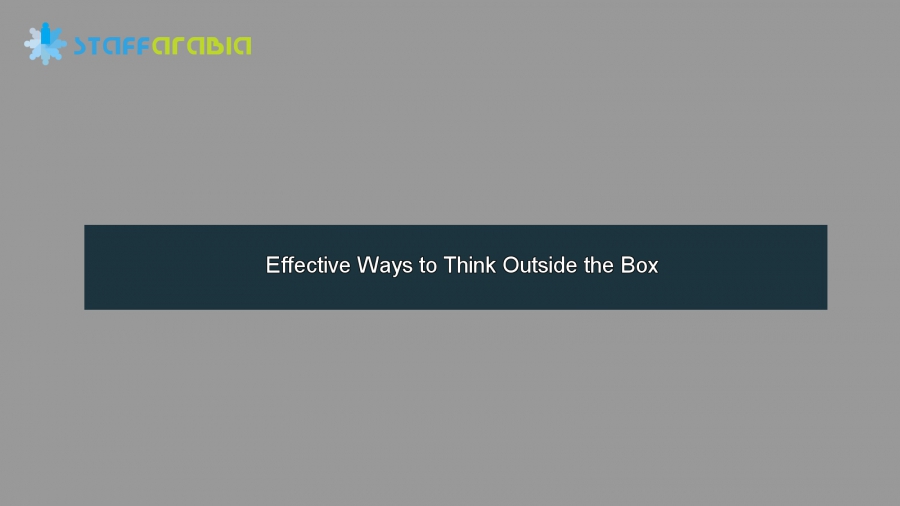
There’s a widespread belief that creative thinking is something we’re simply born with. Yes, it’s true that some people have the ability in greater measure than others, but everyone has the capacity to enhance their own innovative spark. Here are five simple research-based techniques for boosting your ability to think outside the box.
1. Force yourself to step outside your comfort zone
When faced with a challenge, most people tend to stick to their comfort zone and choose the path of least mental resistance, drawing upon tried and tested ideas that have worked for them in the past. However, placing restrictions on your work and forcing yourself to step outside that comfort zone can encourage you to come up with original and exciting solutions.
2. Take a break every once in a while
Mental blocks are incredibly irritating, and have a tendency to occur at the most critical moments. Sometimes, taking a physical break can be helpful for overcoming a stump, but distancing yourself psychologically can be just as useful. The more detached you feel from the problem, the more you’re encouraged to think in an abstract manner, which in turn increases your ability to come up with novel ideas.
There are a number of different ways to create this distance, and all involve changing the way you think about the problem. The aim is to imagine the task as being completely disconnected from your current position, location, and even timeframe.
Numerous studies suggest that we produce more creative solutions when we’re solving problems for others. Hence, one effective strategy is to imagine that you’re making the decision on behalf of someone else. What advice would you give them? What options do they have? What are the possible outcomes from each option? How would you propose they solve the problem?
3. Focus on the problem
Albert Einstein once remarked, “If I had an hour to solve a problem and my life depended on the answer, I would spend the first 55 minutes figuring out the proper questions to ask. For if I knew the proper questions, I could solve the problem in less than 5 minutes.”
When confronted with a question, we usually focus our efforts on trying to come up with a solution. However, it’s fascinating to learn the slightly different approach taken by some highly creative people. Before making any attempt to draw a solution, research shows that their attention is first and foremost focused on re-conceptualizing the problem. This involves examining the question from various angles and perspectives, all with a view to gaining a deeper understanding of the issue.
By developing a more thorough and comprehensive understanding of the issue at hand, we’re far more likely to come up with effective and innovative ways to solve it.
4. Ask yourself the right question
How you feel throughout the day can greatly impact your creativity. In general, positive emotions have been found to more strongly and consistently enhance our creative processes, but negative emotions can be beneficial too.
According to a study by Rice University, negative emotions “alert us to shortfalls, cause us to focus on the current state of affairs rather than our pre-existing assumptions, and motivate us to exert high levels of effort to improve matters.”
On the other hand, “participants in positive moods demonstrate divergent thinking, fluid ideation, and flexible categorization, make unusual associations, and perform well on insight problems, unusual word associations, and heuristic problem-solving tasks.”
The main takeaway is that different emotions affect creativity in different ways, and at different stages of a creative process. For example, if you’re about to begin a project, being in a negative mood may help you to see areas that need improving, which in turn may provide you with the motivation needed to finally begin the task. On the other hand, if you’re in the middle of a project and come up against unexpected challenges, being in a positive mood will make you more open to ideas and amenable to change. Pay close attention to how you’re feeling throughout the day and try channeling it to your creative advantage.
5. Be prepared to make mistakes
Finally, nothing restricts creative thinking quite like the fear of failure. When it comes to thinking outside the box, it’s essential that you’re prepared to take risks and make mistakes. If not, you’ll come to a standstill before you even begin.
Shift your attention away from everything that could go wrong — chances are your world won’t fall to pieces — and instead focus on all that there is to gain. Sometimes our best pieces of work evolve from our mistakes.















